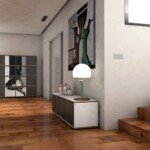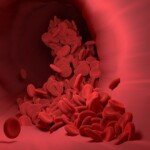Unlocking CNC Potential: A comprehensive guide to port freight plant conversion (and when to go professional)
The sirens produced by CNC are powerful: accuracy, repeatability, and the ability to create complex parts relatively easily. For enthusiasts, manufacturers and small shops, both focusing on this capability, and there is a combination of port freight machines for purchases combined with CNC conversion kits, providing an affordable entry point. This comprehensive guide delves into the world of port freight CNC conversion, exploring the process, challenges, rewards and crucial things – it’s time to work with professional services like Greatlight.
Why consider the conversion of port freight plants?
Port freight central and bench factories, especially popular models such as the Central Machinery 44991 (mini mill) or the larger 33686 (bolt-bracket), are the iconic starting points. Their main appeal for CNC conversion is:
- Cost Efficiency: The initial hardware cost is significantly lower than that of industrial CNC machines used. The conversion kit increases the cost but can make a total investment manageable by individual projects or light prototyping.
- Learning platform: The transformation process itself is an unparalleled education. You can gain machine kinematics, stepping/servo systems, motion control software (e.g. MACH3, LinuxCNC, GRBL), CAD/CAM workflows and troubleshooting – valuable skills for any enthusiast or aspiring mechanic.
- Custom: You can control the entire build. You can choose from motors, drives, ball screws, controller hardware and software and tailor the machine to your specific needs and budget.
Port freight CNC conversion journey: step by step
Converting a manual mill to a CNC is an important project that requires patience, mechanical talent and electrical knowledge. Here is a high-level roadmap:
-
Project planning and machine selection:
- Choose your basic mill with caution. Mini factories are popular, but with rigidity and travel restrictions. Larger desktop plants offer greater functionality, but require more powerful (and expensive) conversion components. A thorough research forum builds for your specific model.
- Defined objectives: Understand the material (aluminum, plastic? steel?) you want to cut, with precision and part size required. This determines component selection.
- Actual budget: It is highly recommended to use mills, high-quality ball screws and linear components (replace frequently resulting in screws), stepper/servo motors and drivers, rugged controllers (e.g., geckodrive, geckodrive, Ethernet smoother), power supply, power, computer, computer, wire, limit/limit/host switches, switches, packages and software. The kit exists, but usually requires additional upgrades.
-
Mechanical conversion:
- Ball screw installation: Replacing factory lead screws with precise ball screws (usually ground C5 or higher) is essential to eliminate stable accuracy on all shafts (X, Y, Z). This usually involves machining/modifying existing brackets or creating new installation solutions. Anti-folding nuts are essential.
- Motor installation: It is crucial to design and manufacture a robust motor mount for each shaft. Vibration and deflection are precise enemies.
- Bearing blocks and support: Upgrade stock bearings to accurately support ball screws under load. Correct preloading is key.
- Improved rigidity (optional but recommended): Projects such as adding epoxy granite fill, strengthening the column, or installing a linear guide kit can greatly improve performance, especially on smaller plants.
-
Electrical integration:
- Drive system selection: Choose a powerful stepper motor (common NEMA 23/34) and have enough torque or servo motor for performance. Pair them with compatible drives (usually microfill for grasslands).
- Controller: The brain connects the computer to the motor. Options range from simple breakout boards with USB/parallel ports to complex standalone motion controllers that often run on real-time systems. Reliability is crucial.
- power supply: High-quality, powerful DC power supply meets your motor and drive requirements and is essential for consistent performance.
- Wiring and safety: For safety and reliability, careful, clean wiring, fusion and grounding are not negotiable. Includes Emergency Stop (E-Stop) circuit. The housing is essential for containing the chip and coolant.
- Software and Control:
- CNC controller software: MACH3/4, LinuxCNC, GRBL-HAL, UCCNC are common PC-based controllers. Carefully configure them (steps/mm, acceleration, etc.).
- CAD/CAM: Design parts in CAD software (Fusion 360, SolidWorks Freecad) and use CAM software to generate tool paths. Optimize feed, speed and tool selection for machine functionality and materials.
- Testing and calibration: Strict testing with dial indicators for rebound compensation and meticulous calibration ensures that actual actions match the command position.
Challenges and Reality: Is the Transformation Right for You?
While it makes sense, the journey has obstacles:
- A lot of time investment: Research, parts procurement, machining modification, assembly, wiring, testing, calibration and troubleshooting take countless hours. Weekend project? Think about it for a few months.
- Skill requirements: Mechanical manufacturing, basic machining, wires (including knowledge of schematics) and software configuration skills are crucial. Strong troubleshooting skills are often tested.
- Rigidity and vibration limits: The port freight plant is not Bridgeport even if it is stiff. Aggressive cutting with harder materials or larger tools can reduce chatting and reduce accuracy.
- Accuracy and repeatability: A well-executed conversion can achieve ~0.001" Tolerances under ideal conditions, but heat-induced motion, inherent machine bending and building quality changes mean that this is not a tool that requires aerospace tolerances. This is a powerful amateur/light prototype machine.
- Safety: Mobile CNC machines are powerful. Fences and electronic docks must be used for protection. Understanding safe operations is crucial.
Professional alternative: When seaport freight reaches limit
The conversion of port freight CNC is a learning tool and is used for amateur level production. However, when your project requires upgrading in these areas, when working with professional CNC machining services, Great Not only become an option, but also Best choice:
- Uncompromising precision and complex geometry: Need true five-axis simultaneous machining with ultra-high tolerance (±0.0002)" Or is it closer)? Is it impossible to require complex contours, undercuts or features on 3 axes? Greatlight’s advanced five-axis CNC center provides complex geometry in a single setup with industry-leading precision.
- High rigidity and material versatility: Due to horsepower, stiffness and thermal management limitations, processing of robust alloys, exotic metals or complex polymers often exceeds the ability to convert factories. Professional machines use powerful spindles, optimized coolant systems and excellent foundations to process these materials every day.
- Strict tolerances and surface surface requirements: If your parts must meet stringent dimensional standards or demanding surface finishes (RA/RZ values), the inherent limitations of conversion can be a barrier. Industrial CNCs consistently achieve this with strong design and precise control.
- Production and lead time: Need to deliver dozens or hundreds of parts quickly and consistently? Converting a port freight factory is fundamentally about prototype or Very Small volume work. Greatlight provides scalable production capacity and simplified workflows for quick turnaround on custom parts.
- Expertise and reliability: Skip months of headaches, trial and error, and maintenance. Leverage Greatlight’s engineering expertise, from design to manufacturability recommendations to material selection to optimized processing strategies and comprehensive post-processing (anodization, plating, polishing, heat treatment). You will get guaranteed results without investing in machinery or engineering time.Why choose Greatlame for your CNC needs?
- State-of-the-art five-axis machining: Unlock unrivaled accuracy and geometric freedom for truly complex components.
- Material mastery: Expertise on processing various metals and plastics into strict specifications.
- End-to-end solution: Simplify your project with integrated design consultation, precision machining and comprehensive post-machining – all under one roof.
- Quick customization and quick turnaround: Benefit from an optimized process designed for the speed and flexibility of custom jobs.
- Competitive price and quality assurance: Supported by strict quality control and priced with value awareness.
Conclusion: Intelligent ways to successfully process
It is a profound achievement for specialized manufacturers to successfully convert a port freight plant into a functional CNC machine. It promotes valuable skills and provides a tangible resource for creating custom parts in your budget. If you thrive in hands-on engineering and your needs are suitable for the functions of the machine, you will face challenges.
However, recognize its inherent limitations. When your project requires true industrial accuracy, complex multi-axis geometry, quantity to produce or process challenging materials, the time and effort putting time and effort into the transformation is no longer economical or effective. This is Great intervention.
As a professional five-axis CNC machining manufacturer with advanced equipment and deep technical expertise, Greatlight provides reliable, high-quality and efficient solutions for your critical components. We deal with the complexity of processing so you can focus on innovation.
Need to exceed the amateur field accuracy? Customize your precision parts now at the best prices! [Optional: Insert Call to Action Link/Button – Get a Free Quote Now]
FAQ: Port freight CNC conversion and professional processing
Question 1: What is the usual CNC conversion for port freight?
A: The cost difference between basic mill model and component quality is very large. one Basic Mini Factory conversion kits may start at around $500-$800, but in reality, once you include high-quality round screws, upgraded motors/drivers/drives, controllers, power supplies, power supplies and essential accessories – a budget of $1500-$3500+ is universal – add The cost of the factory itself ($700-$2000). Don’t forget your time investment!
Q2: How accurate will my port freight conversion be?
A: With meticulous assembly and calibration (eliminate rebound, Gram), you can achieve accuracy within range 0.001" To 0.005" (.025mm to .127mm) under ideal conditions (lighter cutting, favorable material). However, thermal expansion, machine bending and vibration will affect reliability compared to professional CNC machines ±0.0002" Or better still.
Q3: What is the most difficult part of the conversion process?
A: This is subjective, but common challenges include: accurate machining/installing ball screws and seats (processing skills/access required); diagnosing and solving ongoing electrical noise or communication problems in the control system; and achieving sufficient overall machine stiffness to prevent trembling and deflection during cutting. Patience and durability are key.
Q4: Which controller software is most suitable for beginners?
one: grbl Controllers (such as those running on an Arduino) provide a simpler entry point for mini mill conversions. linuxcnc Free and powerful, but the learning curve is steep. MACH3/4 and UCCNC is a popular paid window option with polished interface and strong community support. Choose according to the complexity and comfort of the machine.
Question 5: Should I definitely choose professional CNC processing on the conversion mill?
A: Choose a professional service like this Great When your project requires: tolerances are about tighter than about. 0.005";Real five-axis machining for complex contours; production exceeds several identical parts; processing very hard or exotic materials (e.g. stainless steel, titanium, inconel); demanding surface finishes; reliable, repeatable results without troubleshooting downtime; or fast project turnaround guarantees.
Q6: Can Greatlight handle low-capacity prototype operation?
Answer: Absolutely! Greatlight specializes in rapid prototyping and small volume production. Our five-axis CNC features are ideal for rapid production of high-precision functional prototypes or small batches with complex geometries, ensuring quality and functionality far exceeds the conversion mill function. Our simplified process ensures fast quotes and turnover.
Q7: Which materials can be used in Greatlight Machine?
one: Greglight machines with various materialsinclude:
- Metal: Aluminum, steel (various grades), stainless steel, brass, copper, titanium, inconel.
- plastic: ABS, Delrin (POM), Nylon, PTFE, PEEK, ULTEM, Polycarbonate, Acrylic (PMMA).
- Contact us for specific material inquiries! We have the expertise and tools to handle them effectively.

















